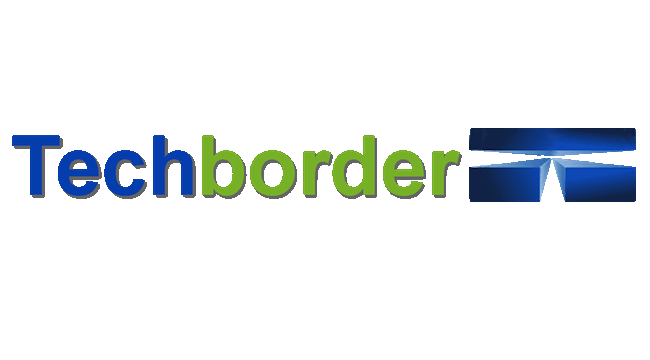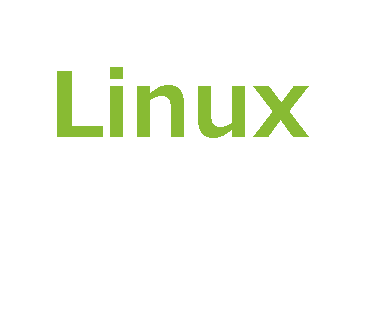Created on: November 1,
2001
Last Updated: June, 2003
Don't use any commands
here until you have read the disclaimer at
the end*
Conventions for this document
Why not use a GUI? Memorizing commands, are you
crazy?
Beginnings and Essentials
Quick lesson on options and directories
How do I view a .pdf file?
How do close a program that has locked-up?
How do I view (know) what computers are listed in
a domain??
How do I log into another computer from a shell
terminal?
How do I move files over the network (from a
shell terminal)?
How do I compress and uncompress files?
How do I delete an entire directory and all
directories under it?
How do I copy files from my Linux machine to a
DOS formatted floppy disk, so that my Windows machine can read it?
How do I make a symbolic link?
How can I see what resolutions and colors are
available to the X-windows Server (the GUI for linux)?
What's in my PC?
How can linux repair a hard drive?
Other miscellaneous commands:
Mounting a Samba share (Windows drive or folder)
to Linux
Mounting Samba shares at bootup
Mounting Samba shares (connecting to a Windows
network from Linux).
To look up your local settings for the network,
view the files
Is there another way to format a 3.5" disk for
Windows?
How do I add a route?
Printer commands
Useful text based programs
Programming and Network Conventions
*Disclaimer:
itlalics
words
are
placeholders and will vary from user to user. Don't copy literally.
"#"
represents
the beginning of comments. Don't type this as a
command, but it's ok if you do. Bash (your shell terminal) will
just ignore it because it sees "#" as a comment.
$
represents the command prompt and the beginning of user input.
Don't type this.
You
may be thinking, why all this command line stuff in Linux? In
the early 90s, didn't all the operating systems evolve to the
point-and-click method with GUI interfaces that left DOS command line
stuff behind? Well, yes there is a GUI (X-server) available for
all distributions of Linux, but to do anything useful with
configurations, installations, and to really know your Linux OS (i.e.
security, and performance issues), you have to go to the command
prompt. So leave that mouse behind and stretch your hands for
some speed-typing, because you're in Linux now. Also, memorize
frequently used commands, and build a text file for the obscure ones
you have used. Eventually you'll realize that for the gurus, the
GUI (X-server) is just used to pack even more Linux command prompt
windows onto one screen, and for the occasional (ha!) web
browsing.
1.Type
these
commands from any shell terminal (open by clicking on "black box
thingy" on lower left of screen)
2.Use
[tab]
key to autocomplete commands or files. If it doesn't
autocomplete, hit tab twice to see list of commands or file that match
so far.
$
anycommand --help
#Shows
help menu for any command. Good source of
#information
for the command options
$man
anycommand
#
A text based Help file. If the man pages are available for that
command, they are usually an even
#better
source of information than "--help." Man pages
#
was started back in the days of Unix (prior 1991 before Linux was
created) and have been
#loosely
continued in Linux (man pages were required for most
Unix systems, but are optional in Linux).
$
ls
#Lists
the files in directory
$
ls
-al
#Lists
all (the all comes from the "a" in the "-al" option) the files
with details (the details comes from the "l" in the "-al" option).
#
See the section Quick lesson for the meaning of "." and ".."
$
pwd
#Shows
what directory (a "directory" is Linux speech for a "folder")
you are currently working in.
$
cd directory/
#Goes into subdirectory called directory
$
cd
..
#Backs
up one directory
$
cd
/
#Backs
up to the beginning (root directory)
$
cp /sourcedir/file.txt
/targetdir/copyherewiththisname.txt
#copies the file file.txt
$
mv /file.txt
/target.txt
#Moves the file file.txt. Also used
for renaming (it's the same to the OS so there is not a separate
command for "rename").
$
mv /sourcedir/*.txt
../
#Two things here: 1. uses wildcard (*) to
act on all
#files
ending with .txt 2. moves these files back
#one
directory
$
rm /file.txt
#Deletes (remove) file
$
rm /file.txt -f
#"f
" means force.
$
rmdir /emptyjunkdir/
#deletes
an empty directory
$
rmdir /notemtpyjunkdir/ -fR
#Forced.
"R" means recursive, so it will delete all
#subdirectories
$
rm . /*
-Rf
#CAREFUL!
This deletes everything in this
#directory,
recursively. It's forced so you won't be asked for
#confirmation
$
ls
-al
#Lists
all (the all comes from the "a" in the "-al" option) the files
with details (the details comes from the "l" in the "-al" option).
This
is usually how the options in Linux commands work. The
different options add up behind that little minus sign ("-al"), and
some commands or options take argruments. For argruments, follow
the syntax given by the "--help" or man pages. Look for examples.
Notice
the two lines at the beginning, there's a "." and a ".." that
represent directories. Every directory on the computer has these
two in them (except the root directory, /, it does not have ".." ) .
The
"dot" directory is the current directory, so if you type "rm
./*.txt" it will only delete text files from the directory you are
in. However, if you left out the "." and typed "rm /*.txt" you
would have deleted any text files from your main (root)
directory. So be careful.
The
"dot dot" directory is the directory above it, so that's why you
type ".." when you want to go up a directory (i.e. type "cd ..").
Even more useful, say you wanted to create a directory in the parent
directory, move some files there, and do it without having to move from
the directory you are in. Just type "mkdir ../newdirmadeeasy"
and
then move some files to it (i.e. type "mv fileOne fileTwo ../newdirmadeeasy/
").
$
xpdf filename.pdf
#
assumes the program XPDF is installed
How
do
I view what is being processed along with PIDs?
$
top
#press
[ctrl-Z] to exit
Or
$
ps -ax
$ps
-ax
| grep 'lockedprogram'
Let's
say
for example Netscape has an opened window that is hung up and won't
close.
$ps
-ax
| grep
'netsc'
#Type
the first three or four letters for the program you want to find
Find
the
PID of the most likely process of Netscape (a single program has
multiple processes), and carefully type that PID into the command:
$
kill -9
####
#Where
#### is the 4-digit number for the PID.
$
host -l lan.vbn
#lists
all dns names assign to the domain vbn
If
the ssh program (i.e. ssh server) is running on the server computer,
and a ssh client program is installed on the client computer, you can
use this. For Windows, Putty is a good program that has ssh among
other client programs for connecting to Linux servers.
$
ssh youraccount@machine.lan.vbn
To
log
out press [ctrl-D] or type
$
exit
$
scp youraccount@machine.lan.vbn://sourcedir/file //destinationdir/
#downloads
$
scp //sourcedir/file youraccount@machine.vbni.com://destinationdir/
#uploads
An
example
is to back-up your home directory. Be sure you are in
your home directory and type:
$
tar -zcvf ./backhometodaysdate.tgz
./*
#"-z"
means z compression format
To
uncompress
to the current directory (Precaution: uncompress to a
temporary directory):
$
tar -zxvf ./compressedfile.tgz
#notice
the option change -c to -x
Caution:
Be
sure you know what you are removing. This command doesn't ask
for confirmation when deleting.
$
rm -fR ./worthlessdirectory
For
Linux,
$
/sbin/mkfs -t ext2 /dev/fd0
For
windows,
$
/sbin/mkfs -t msdos /dev/fd0
A
symbolic link is like a "Shortcut" in Windows.
$
ln -s /sourcedir/file /targetdir/newlink
Don't
edit
this file unless you know what you're doing.
cat
/etc/X11/XF86Config
To
find
out details on most of your computer's part except CDROM speed,
video RAM, and monitor size, view the following files:
/proc/pci
/proc/meminfo
/proc/cpuinfo
For
the
size of the harddrive, type this command
$df
-h
For
the
size of the current directory, type
$du
-h
$fsck
/dev/hda1
#replace hda1 the with harddrive
letter and number
#you
want to check. Use command $df -h to find
#this
harddrive information.
$
shutdown -r now
#restarts
the computer
$
shutdown -h
now
#shutsdown
(halts) the
#computer
$
mkdir newdirectory
#makes
directory
$
pwd
#prints
what directory you are in
#(print
working directory)
$
less file
#views
file
$
cat file
#views
file
$
rpm
-ivh
#installs
package, verbosely
$
rpm
-iq
#?
$
smbmount //server/dcregal -o username=dcregal
-or
-
$
mount -t smbfs //sambaserver/directory/
/wherever/ -o password=something
#When
mounting with the commands above, the mount will disappear when
the computer is restarted. So to have it mount at boot time, edit
the /etc/fstab file.
$vi
/etc/fstab
Add
the
following line to the bottom of the /etc/fstab file.
//sambaserver/directory/
/wherever/ smbfs password=something 0 0
From
an
email from Bill Jr., my manager at the time.
1.
Make
sure that smbfs is installed on your computer. A good
indication
is
a
'man -k smbfs' and see if it returns anything. If it doesn't the
odds
are
significant that you need to find it and install it.
2.
To connect to the network,
do this.
$cat
/etc/passwd
| grep "whateverYourUsernameIs"
note
what
your userID and your groupID are.
3.
go
to your home directory (as your non-root user).
$
mkdir network
$
cd network
$
mkdir sharename #(they will be listed
at the bottom of this mail by
username).
$
su - (or get root)
4.
edit
your /etc/fstab
add
a
line like this for every share to the end of your fstab:
(all
on
one line)
//lanserver/dcr
/home/dcr/network/dcr
smbfs
username=dcr,password=****,uid=$UID,gid=$GID
0
0
(end
one
line)
the
$UID
is the UID you got out of the /etc/passwd file
the
$GID
is the GID you got out of the /etc/passwd file
the
****
behind password is your password spelled out in plain English.
5.
Example
of shares
dcregal:
//lanserver/dcr
//lanserver/forms
//lanserver/technology
rbk:
//lanserver/rbk
//lanserver/forms
//lanserver/technology
mac:
//lanserver/mac
//lanserver/technology
-------
You
may
want to hang onto this. This is how you can connect to a
windows network from linux.
Bill
Jr.
$
/sbin/ifconfig
#your
network configuration for
#your
hardware
$/etc/hosts
$/etc/resolve.conf
#shows
your IP addresses
$netstat
-nat
#shows
status of the your computer's
#
network connections
$netstat
-a
$netstat
-at
You
should
format your disk in Windows, then mount it in Linux using the
following instructions.
First,
as
root type:
mkdir
/foo
Then
with
the floppy in the drive, type:
mount
-t
vfat /dev/fd0 /foo
To
copy
files, use the command:
cp
[filename] /foo
To
unmount
the floppy so you can eject it, type:
umount
/foo
$route
add
net 202.87.240.0 202.87.242.23
1 #static; will
be there until manually
#
removed. Administrator has to know the topology of the network
at boot time
#and that topology must not change between boots.
$routed
#dynamic
(Uses daemons). Standard UNIX.
$gated
#dynamic
(Uses daemons). More features.
$iptables
#Better
way to make a firewall
sftp
[file][folder]
#secure
file transfer protocol
/etc/init.d/lpd
--help
#this
will give you the options
/etc/init.d/lpd-ppd
--help
#this
will give you the options
pdq
#shows
status
xpdq
#gui
program to configure pdq when in xserver
lpq
#Shows
the documents in the print queue
$
bc
#
BC is a text based calculator.
Careful
of
the rounding (e.g. Type "1/2" and press Enter. It will
return "0.").
Exponents
examples:
Ex.
1
2^4
[Enter]
Should
return 16.
Ex.
2
4^1/2
Should
return 2.
$lynx
www.somewebsite.com
#
lynx is text based web-browser that will display most sites.
#This
is the best way to surf when you do not have X-server.
Naming Conventions at an
Internet company
Conventions
are
important when working with computers. Write up the standards and
conventions followed and let every programmer and network personnel
know. Even if it is just you working on the computers, you should
be consistent so your work will be more organized, thus easier to find
your way around, and the code in each program you write will look the
same (you can read you own code months later). Short
term it takes more time (setting up the conventions), but once it is
set-up and followed, long term it will save hours because programmers
can read the code of another easier.
Network
fmlast.subdomain.copany
Ex:
dcregal.lan.vbn
IP
numbers
.255
for
gateways
Databases
are
named
with all capital letters.
Ex:
DATABASE
Tables
contained
within
a database are named first letter capitalized.
Ex:
UpperUpper
PHP
variables
and
Cookies
are named with "stud cap" format.
Ex:
lowerUpper
HTML, all attributes are lowercase except
SELECTED and CHECKED follow example below
<INPUT
type="lower"
SELECTED>
<
CHECKED>
Although I have never damaged my computer
using these commands, use the commands here at your own risk.
Used
improperly, some commands can crash programs (kill -9) or erase
entire directories (rm -rf /bin/laden). I am not responsible
for
any headaches, lost or corrupted data, security holes, damaged or
locked-up computers resulting from using these.





